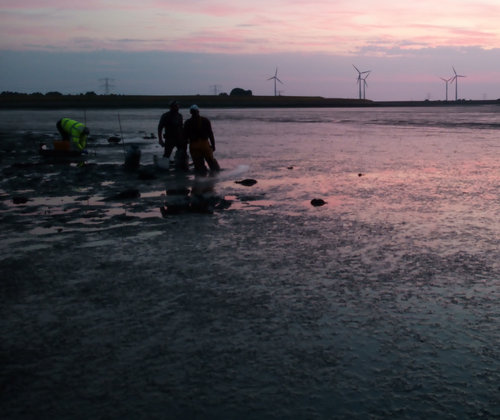
RISSE-BUHL Ute
- Ecology Department, Technische Universität Kaiserslautern, Kaiserslautern, Germany
- Biodiversity, Climate change, Colonization, Community ecology, Ecological stoichiometry, Ecological successions, Ecosystem functioning, Evolutionary ecology, Experimental ecology, Food webs, Freshwater ecology, Habitat selection, Landscape ecology, Microbial ecology & microbiology, Population ecology, Spatial ecology, Metacommunities & Metapopulations, Species distributions, Statistical ecology
- recommender
Recommendation: 1
Reviews: 0
Recommendation: 1

Identification of microbial exopolymer producers in sandy and muddy intertidal sediments by compound-specific isotope analysis
Disentangling microbial exopolymer dynamics in intertidal sediments
Recommended by Ute Risse-Buhl and Nils Rädecker based on reviews by 2 anonymous reviewersThe secretion of extracellular polymeric substances (EPS) enables microorganisms to shape and interact with their environment [1]. EPS support cell adhesion and motility, offer protection from unfavorable conditions, and facilitate nutrient acquisition and transfer between microorganisms [2]. EPS production and consumption thus control the formation and structural organization of biofilms [3]. However, in marine environments, our understanding of the sources and composition of EPS is limited.
In this study, Hubas et al. [4] compare the carbon and nitrogen isotope ratios in EPS with the carbon isotope ratios of fatty acid biomarkers to identify the main EPS producers in intertidal sediments. The authors find pronounced differences in the diversity, composition, isotope signatures, and production/consumption dynamics of EPS between muddy and sandy environments. While the contribution of diatoms was highest in the bound fraction of EPS in muddy environments, diatom contribution was highest in the colloidal fraction of EPS in sandy environments. These differences between sites likely reflect the functional differences in EPS dynamics of epipelic and episammic sediment communities.
Taken together, the innovative approach of the authors provides insights into the diversity and origin of EPS in microphytobenthic communities and highlights the importance of different microbial groups in EPS production. These findings are vital for understanding EPS dynamics in microbial interactions and their role in the functioning of coastal ecosystems.
References
- Flemming, H.-C. (2016) EPS-then and now. Microorganisms 4, 41 https://doi.org/10.3390/microorganisms4040041
- Wolfaardt, G.M. et al. (1999) Function of EPS. In Microbial Extracellular Polymeric Substances, pp. 171–200, Springer Berlin Heidelberg https://doi.org/10.1007/978-3-642-60147-7
- Flemming, H.-C. et al. (2007) The EPS matrix: the “house of biofilm cells.” J. Bacteriol. 189, 7945–7947 https://doi.org/10.1128/jb.00858-07
- Hubas, C. et al. (2022) Identification of microbial exopolymer producers in sandy and muddy intertidal sediments by compound-specific isotope analysis. bioRxiv, ver. 2 peer-reviewed and recommended by Peer Community in Ecology. https://doi.org/10.1101/2022.12.02.516908